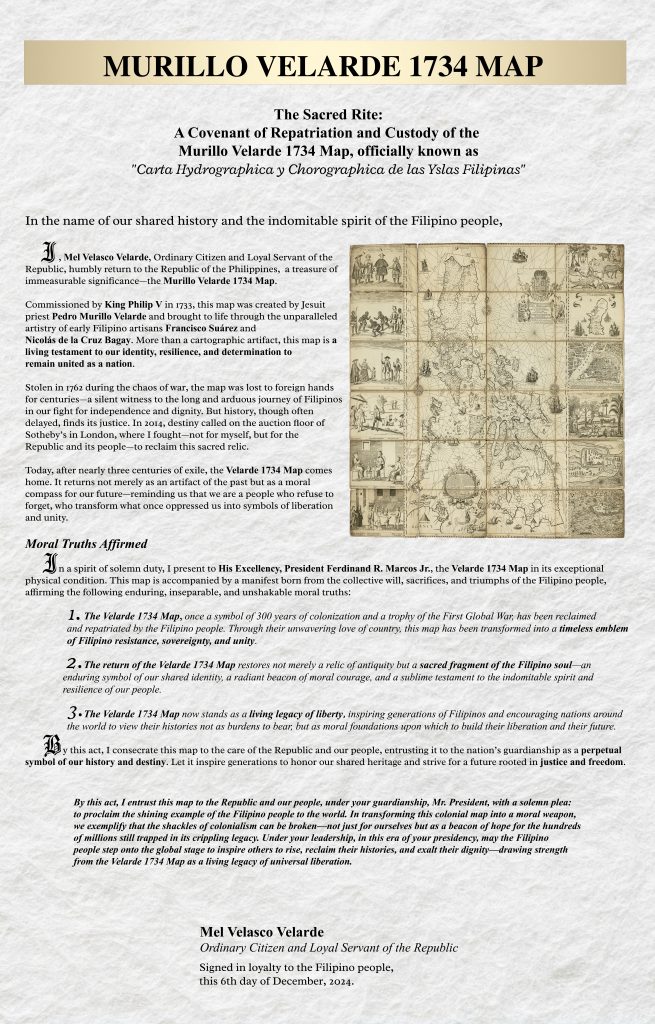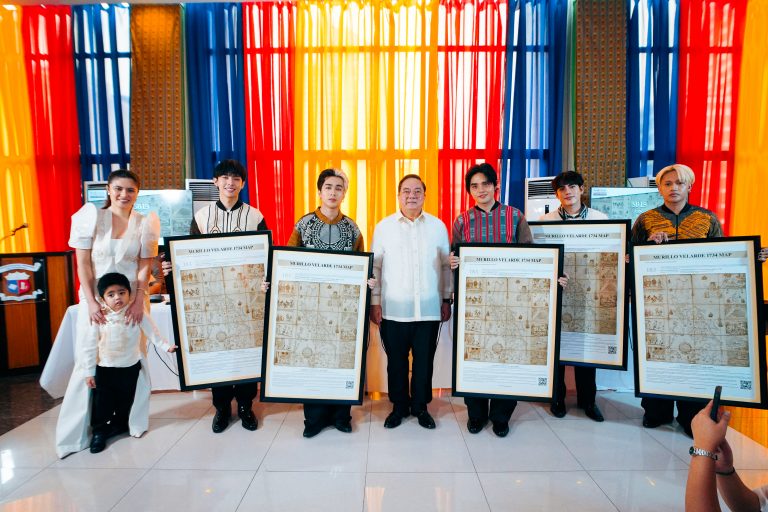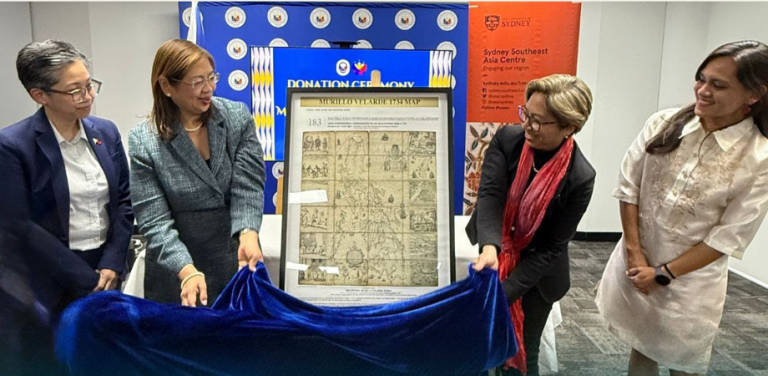
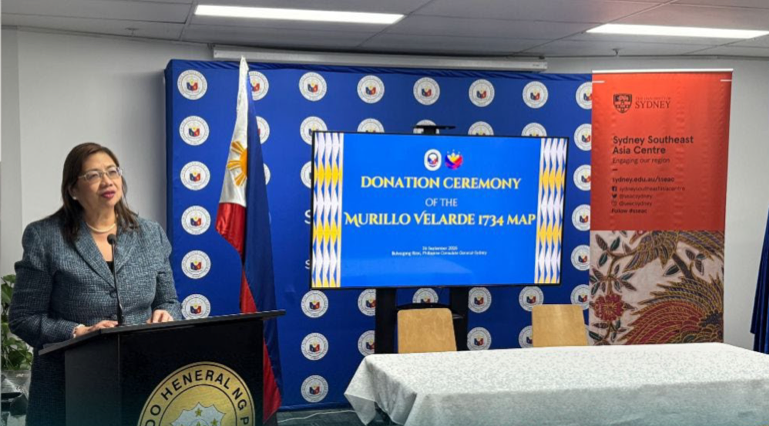

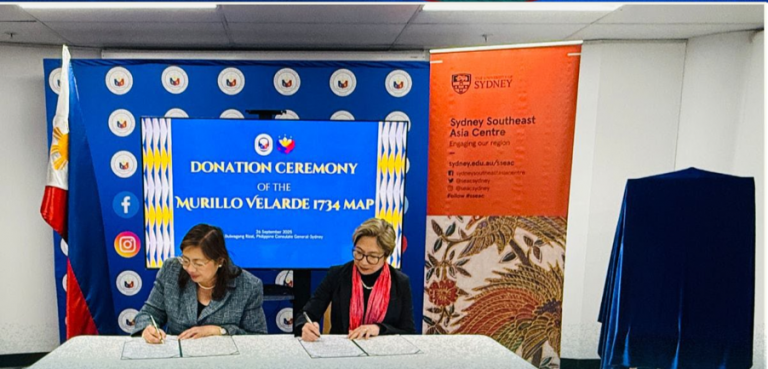
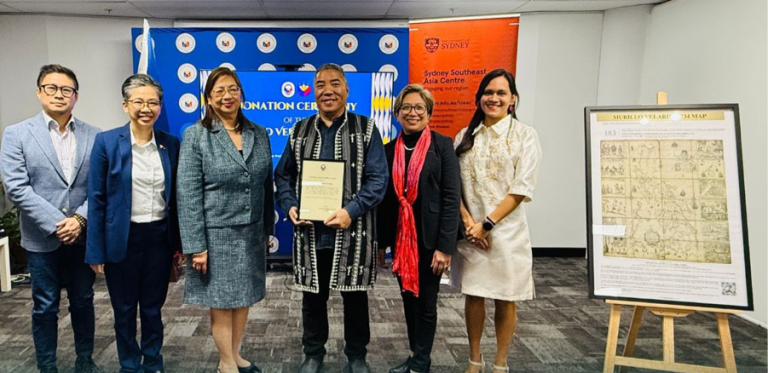
SYDNEY 01 October 2025 — The Philippine Consulate General in Sydney turned over a framed reproduction of the 1734 Murillo Velarde map to the University of Sydney on 26 September 2025. The ceremony followed a MANAMo 2025 public lecture by Professor Ambeth R. Ocampo. The event was attended by Filipino community leaders, undergraduate and postgraduate students, Filipino professionals, and Filipino-Australian media members.
In her remarks, the Philippine Consul General to Sydney Charmaine Aviquivil described the Murillo Velarde map as a landmark of Philippine history and identity. She highlighted its value for education and public engagement and noted that it represents a living partnership between the Philippines and Australia in academic collaboration and cultural diplomacy.
The University of Sydney, represented by Dr. Sandra Seno-Alday, Deputy Director of the Sydney Southeast Asia Centre (SSEAC), thanked the Philippine Consulate General for the donation, recalled collaboration with the Consulate before COVID, and expressed interest in future projects and activities with the Consulate.
For more information, visit https://www.sydneypcg.dfa.gov.ph/, https://www.facebook.com/PHLinSydney or https://www.instagram.com/phlinsydney/.
Related News
SB19 receives replicas of 1734 Murillo-Velarde map from AIJC, Mel Velarde
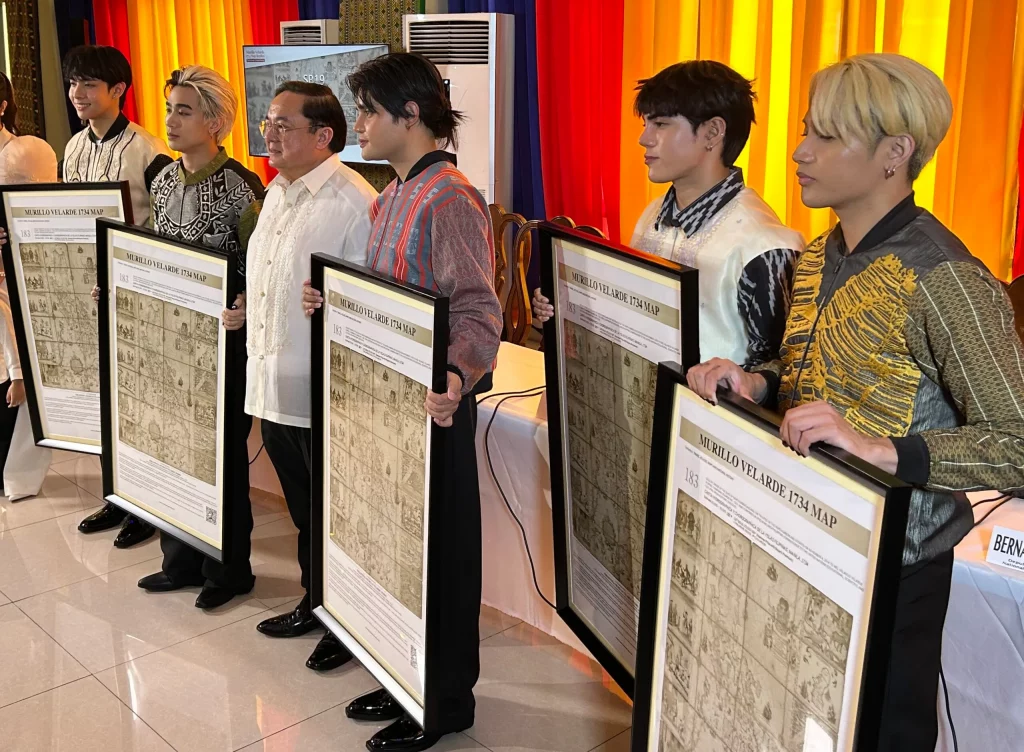
The map’s replicas are turned over to the members of the P-pop powerhouse for their commitment to promoting Filipino culture and history, and their work in spreading awareness to the historical document
WATCH | Looking dapper on their traditional Barong Tagalog, P-pop powerhouse #SB19 arrived at the National Library of the Philippines to receive the official replicas of the Murillo Velarde 1734 Map in recognition of their advocacy for Philippine culture and heritage as National… pic.twitter.com/vRDZ0I0D6g
— Manila Standard (@mnlstandardph) October 29, 2024

Three years after featuring the Philippine map in the music video of their song “What?”, the members of SB19 received official replicas of the 1734 Murillo-Velarde map from the Asian Institute of Journalism and Communication (AIJC).
Read more: https://entertainment.inquirer.net/583274/why-sb19-was-given-replicas-of-the-1734-murillo-velarde-map#ixzz8qZAgB5LM
Follow us: @inquirerdotnet on Twitter | inquirerdotnet on Facebook
‘IWAWAGAYWAY ANG WATAWAT’
— Inquirer (@inquirerdotnet) October 29, 2024
LOOK: SB19 — consisting of Pablo, Josh, Stell, Ken, and Justin — were bestowed the official replicas of the 1734 Murillo Velarde map to celebrate their contributions to Filipino culture. | @HMallorcaINQ pic.twitter.com/Zkx2eQWo6d
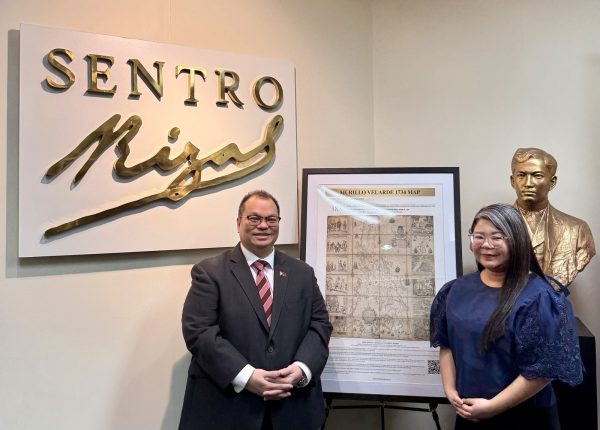
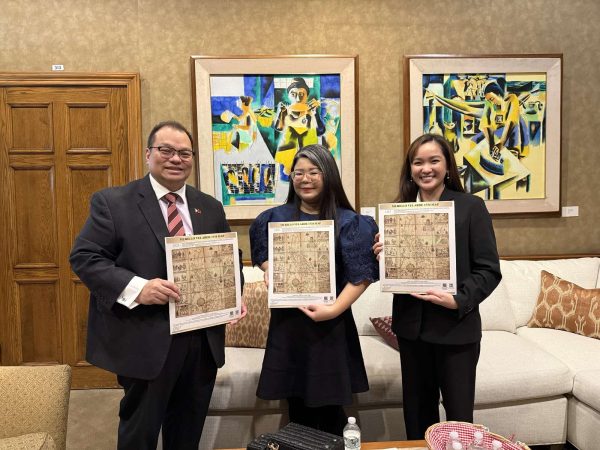
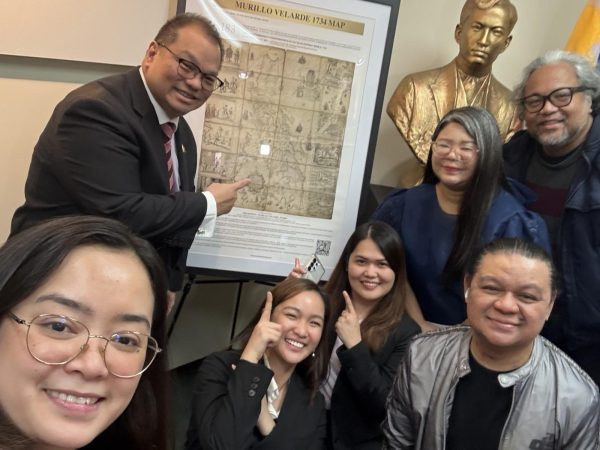
New York City, U.S.A.—Filipinos in New York now have the opportunity to view the historic Murillo Velarde 1734 Map, known as the “Mother of All Philippine Maps,” at Sentro Rizal New York, located at the Philippine Consulate General.
In a turnover ceremony with Consul General Senen T. Mangalile on March 20, 2025, Asian Institute of Journalism and Communication (AIJC) President Therese San Diego Torres represented AIJC Chairman Mel Velasco Velarde, who donated an original Murillo Velarde 1734 Map to the Philippine government. The map donated by Mr. Velarde is now permanently displayed at the National Library of the Philippines, and commemorative copies are being distributed to promote awareness and appreciation of Philippine history and territorial sovereignty.
The ceremonial turnover is part of the Mapa Natin, Kwento Natin campaign—an initiative that aims to engage Filipinos at home and abroad in celebrating their shared history and cultural identity.
The map is particularly notable for its role in the Philippines’ legal victory in the 2016 Permanent Court of Arbitration ruling on the West Philippine Sea. It serves as a tool for understanding the nation’s maritime rights.
Torres shared that as part of the Mapa Natin, Kwento Natin campaign, AIJC is spearheading a new initiative, “Mapping Our Roots: Teaching the History of Philippine Sovereignty and the West Philippine Sea with the Murillo Velarde 1734 Map.” This training program will equip Grade 10 Araling Panlipunan and Senior High School Media and Information Literacy teachers to inspire the next generation to embrace and protect our maritime heritage.
AIJC is calling on partners, including Sentro Rizal and Filipino communities abroad, to support this initiative. The commemorative map’s new home at Sentro Rizal New York will serve as a cultural hub, helping Filipinos in the city preserve and celebrate the Philippines’ rich history.
In his speech, Consul General Senen T. Mangalile said, “It is only fitting that this map finds a home here at Sentro Rizal New York, where it will serve as a bridge between our past and our future. For Filipinos in the diaspora, Sentro Rizal is a sanctuary of culture and identity, a place where our shared history comes alive. This map will now be part of that mission, reminding us that wherever we may be in the world, we remain connected to our homeland.”
A special video produced for the Mapa Natin, Kwento Natin campaign featuring the members of globally recognized P-Pop group SB19, who are Youth and Sentro Rizal Ambassadors of the National Commission for Culture and the Arts (NCCA), was played at the event. The video is a product of collaboration between AIJC, the National Library of the Philippines, NCCA, 1Z Entertainment, SB19, and Neitiviti Studios.
For more information on how to support the Mapa Natin, Kwento Natin campaign and the teacher training, email AIJC at info@aijc.com.ph.
Related News
SB19 receives replicas of 1734 Murillo-Velarde map from AIJC, Mel Velarde

The map’s replicas are turned over to the members of the P-pop powerhouse for their commitment to promoting Filipino culture and history, and their work in spreading awareness to the historical document
WATCH | Looking dapper on their traditional Barong Tagalog, P-pop powerhouse #SB19 arrived at the National Library of the Philippines to receive the official replicas of the Murillo Velarde 1734 Map in recognition of their advocacy for Philippine culture and heritage as National… pic.twitter.com/vRDZ0I0D6g
— Manila Standard (@mnlstandardph) October 29, 2024

Three years after featuring the Philippine map in the music video of their song “What?”, the members of SB19 received official replicas of the 1734 Murillo-Velarde map from the Asian Institute of Journalism and Communication (AIJC).
Read more: https://entertainment.inquirer.net/583274/why-sb19-was-given-replicas-of-the-1734-murillo-velarde-map#ixzz8qZAgB5LM
Follow us: @inquirerdotnet on Twitter | inquirerdotnet on Facebook
‘IWAWAGAYWAY ANG WATAWAT’
— Inquirer (@inquirerdotnet) October 29, 2024
LOOK: SB19 — consisting of Pablo, Josh, Stell, Ken, and Justin — were bestowed the official replicas of the 1734 Murillo Velarde map to celebrate their contributions to Filipino culture. | @HMallorcaINQ pic.twitter.com/Zkx2eQWo6d
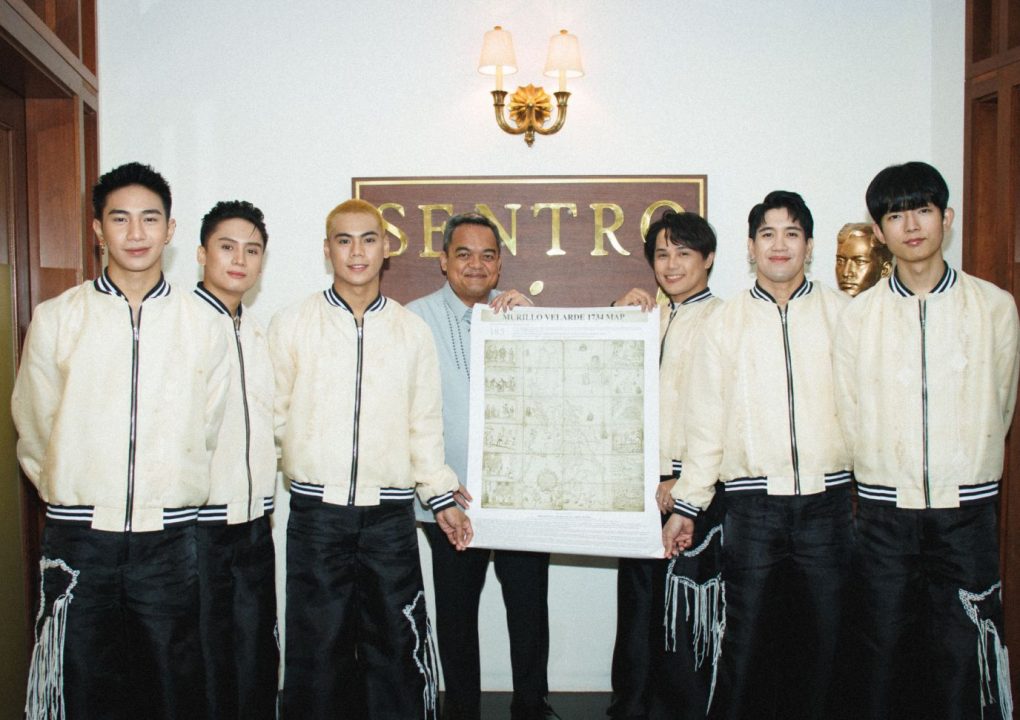
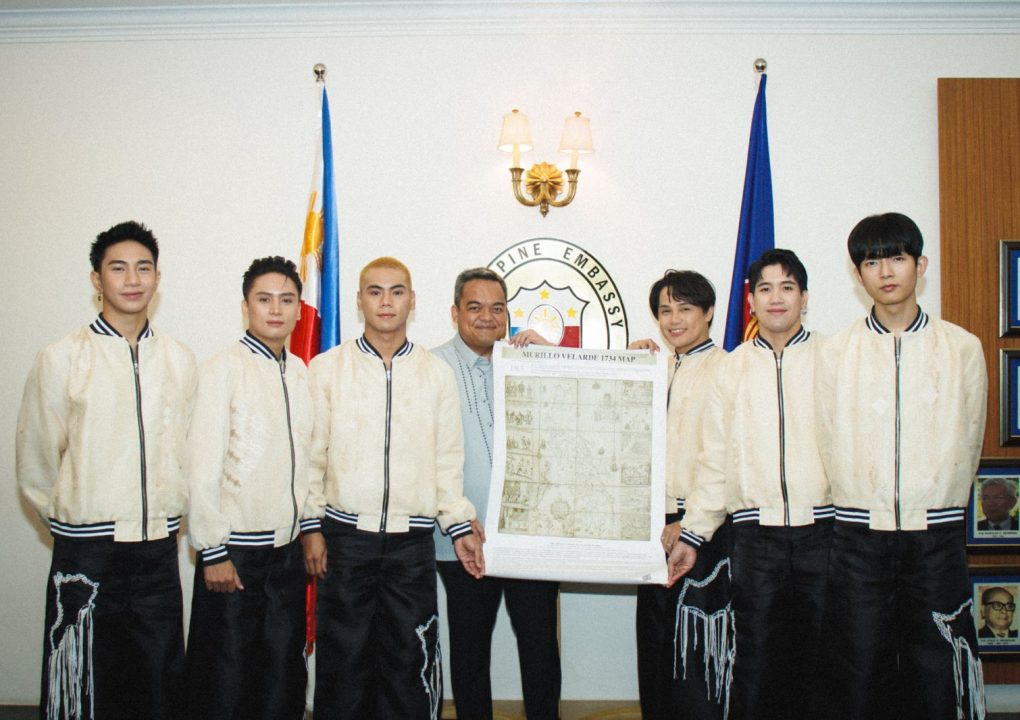
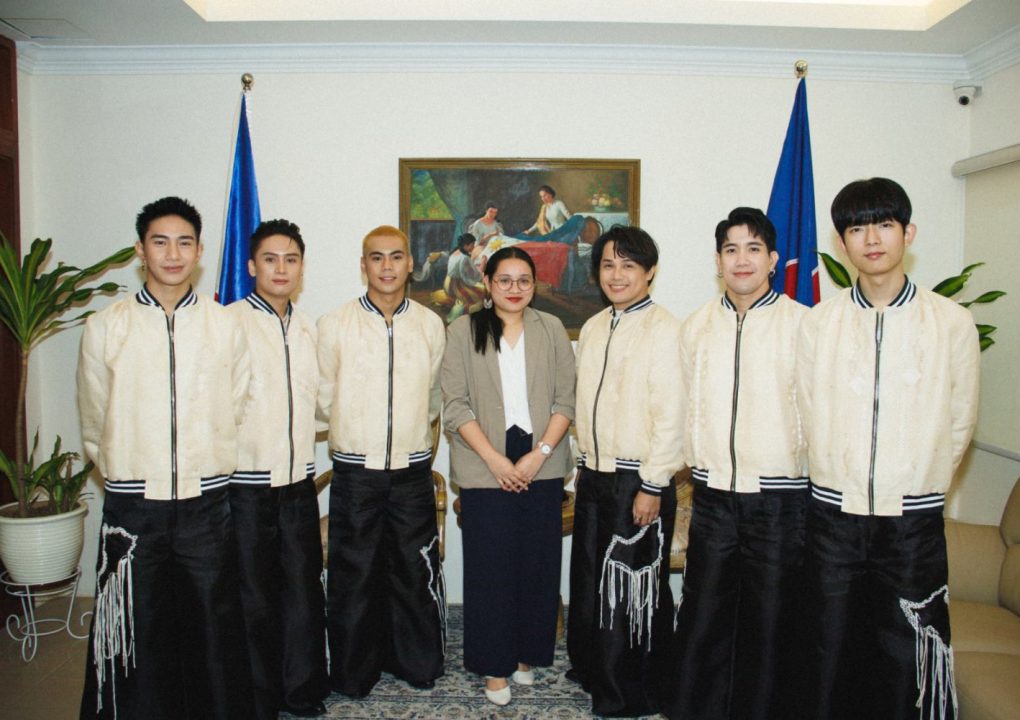




The Asian Institute of Journalism and Communication (AIJC) congratulates P-Pop group 1st One on their new song, MYV or Map Your Vibe, which they debuted on the global stage at 2025 ROUND, the ASEAN-Korea Music Festival in Kuala Lumpur, Malaysia, on June 21.
The song deeply resonates with Filipinos’ identity as a people. As the song goes, “Walang paroroonan nang hindi alam sa’n nagmula. So don’t be scared. Map your vibe.” 1st One delivers a powerful anthem that reminds Filipinos that no matter how far they go globally, their roots remain an essential part of who they are.
This song was inspired by the historic Murillo Velarde 1734 Map, the country’s first scientific map known as the “Mother of all Philippine Maps.”
Mr. Mel V. Velarde, Chairman of the Asian Institute of Journalism and Communication (AIJC), donated an original Murillo Velarde 1734 Map to the Philippine government upon acquiring it from a Sotheby’s auction in London. The map played an important role in the country’s legal victory in the 2016 Permanent Court of Arbitration ruling on the West Philippine Sea. It serves as a tool for understanding the nation’s maritime rights.
This month, 1st One was named cultural partner and bearer of the Murillo Velarde 1734 Map, as part of the campaign titled, “Mapa Natin, Kwento Natin.”
As part of their new role, 1st One members Ace, Max, Alpha, J, Joker, and Jason turned over a commemorative map to Sentro Rizal Kuala Lumpur at the Philippine Embassy in Malaysia where Consul General Roussel Reyes formally received the map on June 21.
Produced by Spanish Jesuit priest Pedro Murillo Velarde with two Filipinos, Francisco Suarez and Nicolas dela Cruz Bagay, the Murillo Velarde 1734 Map is currently on display at the Permanent Gallery of the National Library of the Philippines.
Related News
SB19 receives replicas of 1734 Murillo-Velarde map from AIJC, Mel Velarde

The map’s replicas are turned over to the members of the P-pop powerhouse for their commitment to promoting Filipino culture and history, and their work in spreading awareness to the historical document
WATCH | Looking dapper on their traditional Barong Tagalog, P-pop powerhouse #SB19 arrived at the National Library of the Philippines to receive the official replicas of the Murillo Velarde 1734 Map in recognition of their advocacy for Philippine culture and heritage as National… pic.twitter.com/vRDZ0I0D6g
— Manila Standard (@mnlstandardph) October 29, 2024

Three years after featuring the Philippine map in the music video of their song “What?”, the members of SB19 received official replicas of the 1734 Murillo-Velarde map from the Asian Institute of Journalism and Communication (AIJC).
Read more: https://entertainment.inquirer.net/583274/why-sb19-was-given-replicas-of-the-1734-murillo-velarde-map#ixzz8qZAgB5LM
Follow us: @inquirerdotnet on Twitter | inquirerdotnet on Facebook
‘IWAWAGAYWAY ANG WATAWAT’
— Inquirer (@inquirerdotnet) October 29, 2024
LOOK: SB19 — consisting of Pablo, Josh, Stell, Ken, and Justin — were bestowed the official replicas of the 1734 Murillo Velarde map to celebrate their contributions to Filipino culture. | @HMallorcaINQ pic.twitter.com/Zkx2eQWo6d
Speech of Mr. Mel V. Velarde at the Ceremonial Turnover of Commemorative Murillo Velarde 1734 Map to SB19
Mel Velasco Velarde Chairman, Asian Institute of Journalism and Communication Chairman, NOW Group of Companies (NOW Telecom, NOW Corporation and NOW Cable) National Library of the Philippines October 29, 2024
It is a profound honor to stand before you today to celebrate a group that has not only captured the hearts of millions but has elevated Filipino pride on the global stage—SB19.
As I present this commemorative award, featuring the historic Murillo Velarde 1734 Map, we are reminded of the powerful symbolism it holds. This map, one of the earliest detailed depictions of the Philippine archipelago, is more than just a geographical document; it is a testament to resilience, cultural identity, and the courage to chart new paths even in the face of challenges.
In much the same way, SB19 has journeyed through the rigorous world of entertainment, blazing a trail for Filipino talent worldwide. With their resilience, creativity, and passion, they have become a guiding light, inspiring those who dare to dream of a brighter future. Just as the Velarde Map once guided explorers to new frontiers, SB19’s music and dedication serve as a beacon for the next generation, lighting the way toward endless possibilities.
Pablo, our dedicated leader and main rapper, was born in Imus, Cavite. “I dedicate to you, Pablo, the vignette showing Cavite on the Velarde Map.” Pablo’s journey has been a testament to determination and self-belief. He has not only been the backbone of SB19’s music but also its heart, pouring his emotions into lyrics that have touched the lives of many. In ‘Go Up,’ we hear the line, “Kahit anong mangyari, ako’y tatakbo, patungo sa liwanag,” meaning, “No matter what happens, I will keep running towards the light.” This captures Pablo’s resilience, reminding us that even in a world filled with noise, there is strength in speaking one’s truth and moving forward. Like the Velarde Map—originally used as a colonial tool—Pablo’s journey reclaims and redefines purpose, transforming challenges into symbols of Filipino resilience and pride.
Josh, the charismatic lead rapper and sub-vocalist, hails from Las Piñas City, in Metro Manila. “I dedicate to you, Josh, that proud place called Pinas on the Velarde Map.” Josh’s life story of overcoming hardships and finding his purpose through music resonates deeply with many of us. His journey from facing life’s challenges to embracing his artistry symbolizes the essence of ‘going up,’ of rising beyond circumstances and emerging stronger. In ‘Crimzone,’ he embodies this spirit with the words, ” Now we run / We go hard
like / We’ll lose none.” It’s a song about putting in hard work—blood, sweat, and tears—to achieve one’s goals. He carries the courage of countless young Filipinos who dare to dream, regardless of their beginnings. Just as the Velarde Map invites us to look beyond its borders to honor a legacy of integrity, resilience, and unity, Josh inspires us to reclaim our heritage with pride and purpose.
Stell, born in Las Piñas City and raised in Manila. “I dedicate to you, Stell, the vignette of Manila on the Velarde Map.” Stell brings not just his voice but his soul to every performance. As the main vocalist and choreographer, Stell’s dedication to perfection transcends singing; it’s about giving his all for A’TIN. His voice soars like the peaks of our archipelago, reminding us of the beauty and strength of our culture. In their song, entitled ‘Kalakal,’ the line says, “You can’t stop this, we gonna get it. Who can? None, ‘cause we born to take it.” This reflects Stell’s passion, radiating brightly and guiding others, just like the stars that once guided Pedro Murillo Velarde, Nicolas dela Cruz Bagay, and Francisco Suarez. These stars, long used by explorers to navigate tumultuous seas through dark nights, are a testament to our heritage. Like the Velarde Map, Stell’s voice and dedication are a beacon, guiding future generations to honor the past and embrace their own journeys with pride.
Ken, main dancer and lead vocalist, known for his individuality and dance mastery, was born in Maragang, Tigbao, Zamboanga del Sur. “I dedicate to you, Ken, the vignette with Samboangan on the Velarde Map.” Ken’s journey to SB19 reflects a willingness to embrace his uniqueness while staying true to his roots. His love for his hometown and cultural background shows that we can reach global heights while remaining deeply connected to where we come from. This echoes the lyrics of ‘What?’—“Walang makakatigil sa’kin, patungo sa aking hangarin,” meaning “No one can stop me from pursuing my aspiration.” Ken’s artistry speaks to those who dare to be different, proving that authenticity is the key to breaking boundaries. Just as the Velarde Map, lost for 300 years, has returned to our shores to inspire and remind us of our deepest aspirations, Ken embodies a journey of rediscovery and resilience, encouraging us to forge a path to our people’s destiny.
Last but not the least, Justin, the youngest member, sub-vocalist, and creative director—born in Caloocan, now from Malabon City. “I dedicate to you, Justin, that proud place called Tambobo on the Velarde Map, which is now Malabon and Navotas, your birthplace and the birthplace of Nicolas dela Cruz Bagay, the engraver of the Velarde Map.” Justin represents the bright future of Filipino talent. He brings not only his creative vision but also a deep compassion and understanding for the group’s fans. His dedication to making every performance meaningful reflects the intricate connection between the Velarde Map and its details; every line and drawing tells a story, just as every note and movement Justin makes conveys emotion. In ‘MAPA,’ the words “Pasan mo ang daigdig, ‘di mo na kailangang mag-isa,” or “You’re carrying the world, but you don’t have to do it alone,” remind us that even the strongest among us need support, just as explorers needed guidance on their journeys. The Murillo Velarde 1734 Map now stands as a guardian of our shared journey, symbolizing
unity as we navigate a world shaped by globalization and interdependence, inspiring Justin, SB19, and a new generation to carry forward the strength of our heritage into the future.
SB19, you are more than just artists; you are modern-day navigators, charting a path for the future of P-pop and elevating Filipino talent to the world stage. Just as the Murillo Velarde 1734 Map has endured centuries, may your legacy also stand the test of time, inspiring countless generations. You remind us that our culture, language, and stories are treasures worthy of global recognition.
This commemorative map, a testament to our history, symbolizes the courage to embark on new journeys—where Filipino pride, resilience, and ingenuity shine brightly for the world to see. With this award, we honor not only where you have come from but also where you are leading us: toward a future of unity, strength, and limitless potential.
Congratulations, SB19. Thank you for being our modern-day mapmakers, guiding us toward a brighter future for Filipino music and culture. As carriers of the spirit of the Murillo Velarde 1734 Map and its enduring love for our people, may you continue to ‘Go Up,’ illuminating the path for the next thousand years.
Shine brightly like the stars, proving that no challenge is too great for those who dare to dream.
Related News
SB19 receives replicas of 1734 Murillo-Velarde map from AIJC, Mel Velarde

The map’s replicas are turned over to the members of the P-pop powerhouse for their commitment to promoting Filipino culture and history, and their work in spreading awareness to the historical document
WATCH | Looking dapper on their traditional Barong Tagalog, P-pop powerhouse #SB19 arrived at the National Library of the Philippines to receive the official replicas of the Murillo Velarde 1734 Map in recognition of their advocacy for Philippine culture and heritage as National… pic.twitter.com/vRDZ0I0D6g
— Manila Standard (@mnlstandardph) October 29, 2024

Three years after featuring the Philippine map in the music video of their song “What?”, the members of SB19 received official replicas of the 1734 Murillo-Velarde map from the Asian Institute of Journalism and Communication (AIJC).
Read more: https://entertainment.inquirer.net/583274/why-sb19-was-given-replicas-of-the-1734-murillo-velarde-map#ixzz8qZAgB5LM
Follow us: @inquirerdotnet on Twitter | inquirerdotnet on Facebook
‘IWAWAGAYWAY ANG WATAWAT’
— Inquirer (@inquirerdotnet) October 29, 2024
LOOK: SB19 — consisting of Pablo, Josh, Stell, Ken, and Justin — were bestowed the official replicas of the 1734 Murillo Velarde map to celebrate their contributions to Filipino culture. | @HMallorcaINQ pic.twitter.com/Zkx2eQWo6d

Ang Puerto de Cavite (Port of Cavite) ay isang makasaysayang daungan na may malaki at importanteng ambag sa pambansang kalakalan noong panahon ng Kastila. Ito ang naging pangunahing piyer ng komersyo sa pagitan ng Acapulco, na ngayon ay Mexico at ng Cavite. Ang prosesong ito ng komersyo ay mas kilala sa bansag na Manila-Acapulco Galleon Trade.
Ang Puerto de Cavite ay kilala rin sa tawag na Ciudad de Oro Macizo, o ang “Siyudad ng Ginto.”
Isa sa itinatampok sa vignette ng Mapa ng Murillo Velarde 1734 ang ilustrasyon ng Puerto de Cavite.
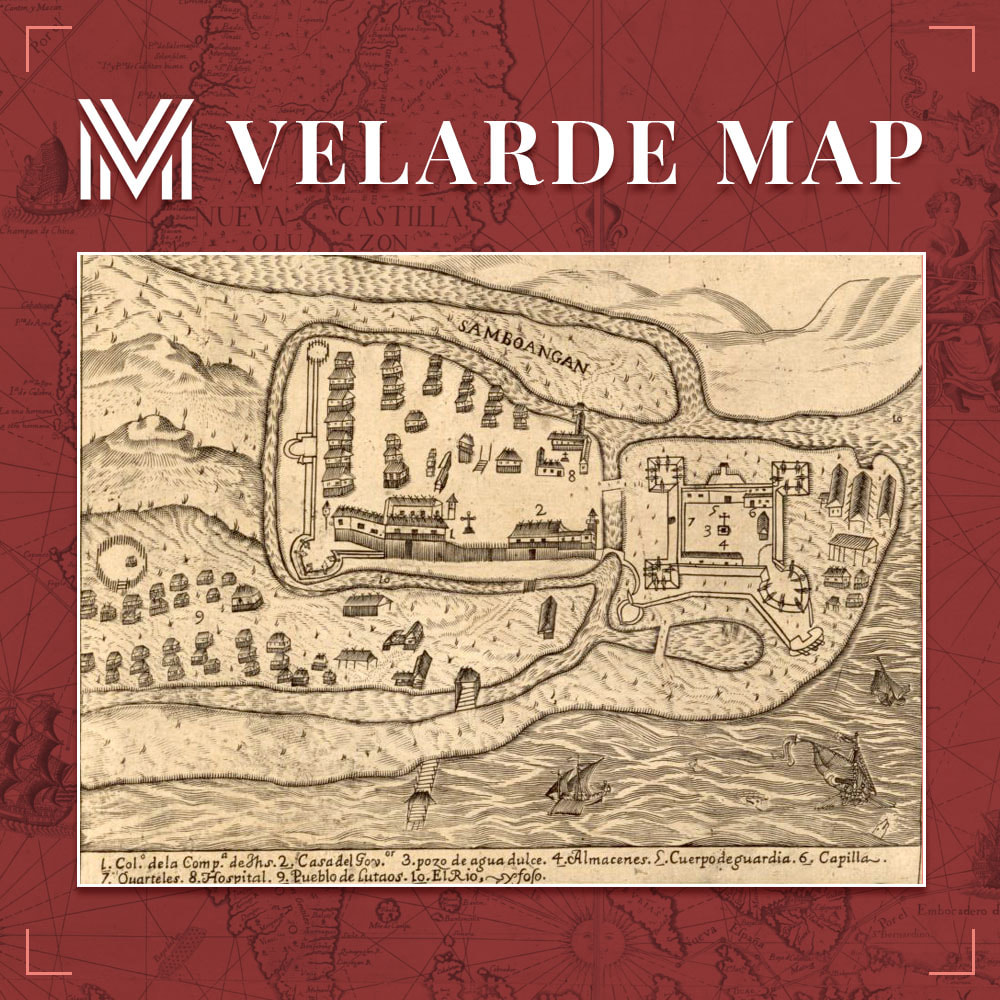
In 1635, Spanish soldiers established Zamboanga on the site of a local village. Its name comes from the Malay word “jambangan,” which means “place of flowers,” and the Zamboangan roadsides are bordered with bougainvillea, orchids, and other tropical flowers. The shrine of Our Lady of the Pillar, Fort Pilar, was established in the 1700s to protect Christian settlers against Moro (local Muslim) pirates, and it currently houses a branch of the national museum.
This vignette of the Murillo Velarde 1734 Map exhibits the very image of Zamboanga and its vicinity from Padre Pedro Murillo Velarde’s vision.
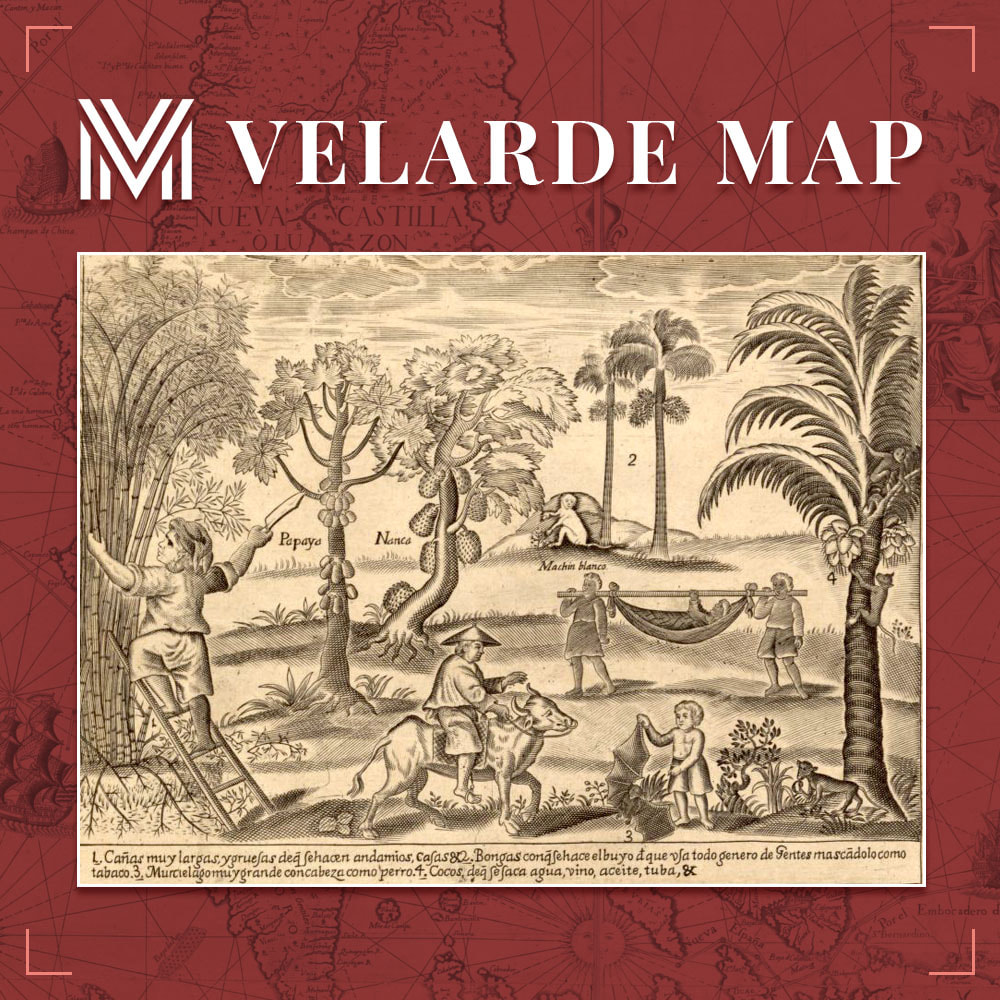
Many anthropologists debate over how agriculture spread to the Philippines, and a precise date of its beginning is uncertain. However, there are indirect indications and other pieces of evidence that anthropologists can use to estimate when and how particular crops arrived in the Philippines. Rice is a major agricultural crop in the Philippines nowadays, and many nations across the world buy rice and other Philippine products.
At the height of the Spanish rule, when businesses were fostered and developed to meet the principal demands of the colonizer Spain and other European consumers for tobacco, sugar, and abaca, traces of modern Philippine agriculture became most prominent to the outside world.
This vignette of the Murillo Velarde 1734 Map exhibits the 17th century rural settings in the Philippines.
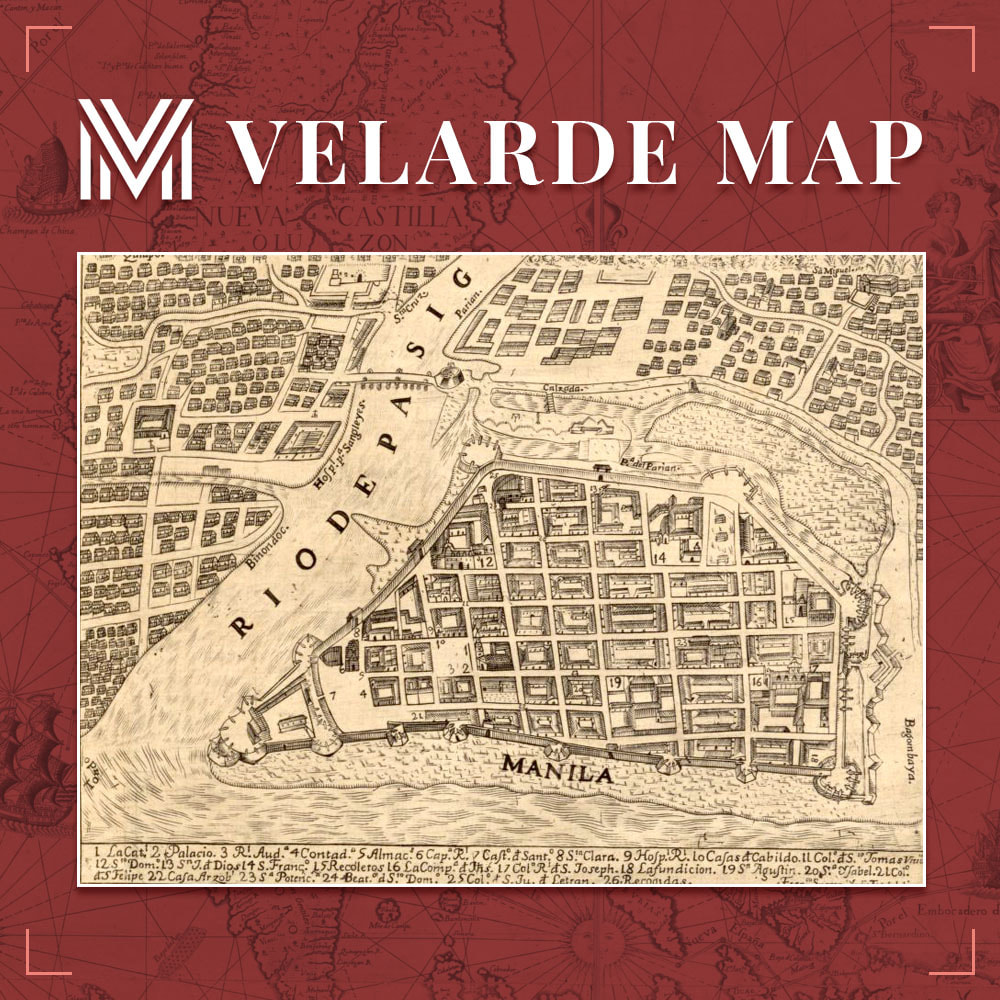
The Pasig River in Manila flows into Manila Bay from Laguna de Bay, the Philippines’ largest lake. It streams north-northwest through Pasig, bisecting Manila, before entering the bay between the north and south ports. It is 14 miles long (23 km). During the Spanish colonial era, the wharves and quays near the river’s mouth served the early interisland commerce. At the time, the Pasig River was home to a vast population of barge and raft dwellers. The shallow, slow-moving creek is presently spanned by nine bridges. It is passable by small ships, but its harbor services have diminished.
This vignette of the Carta Hydrographica y Chorographica de las Yslas Filipinas or the Murillo Velarde 1734 Map exhibits Rio de Pasig, visually interpreted by the Spanish Jesuit priest, Padre Pedro Murillo Velarde.
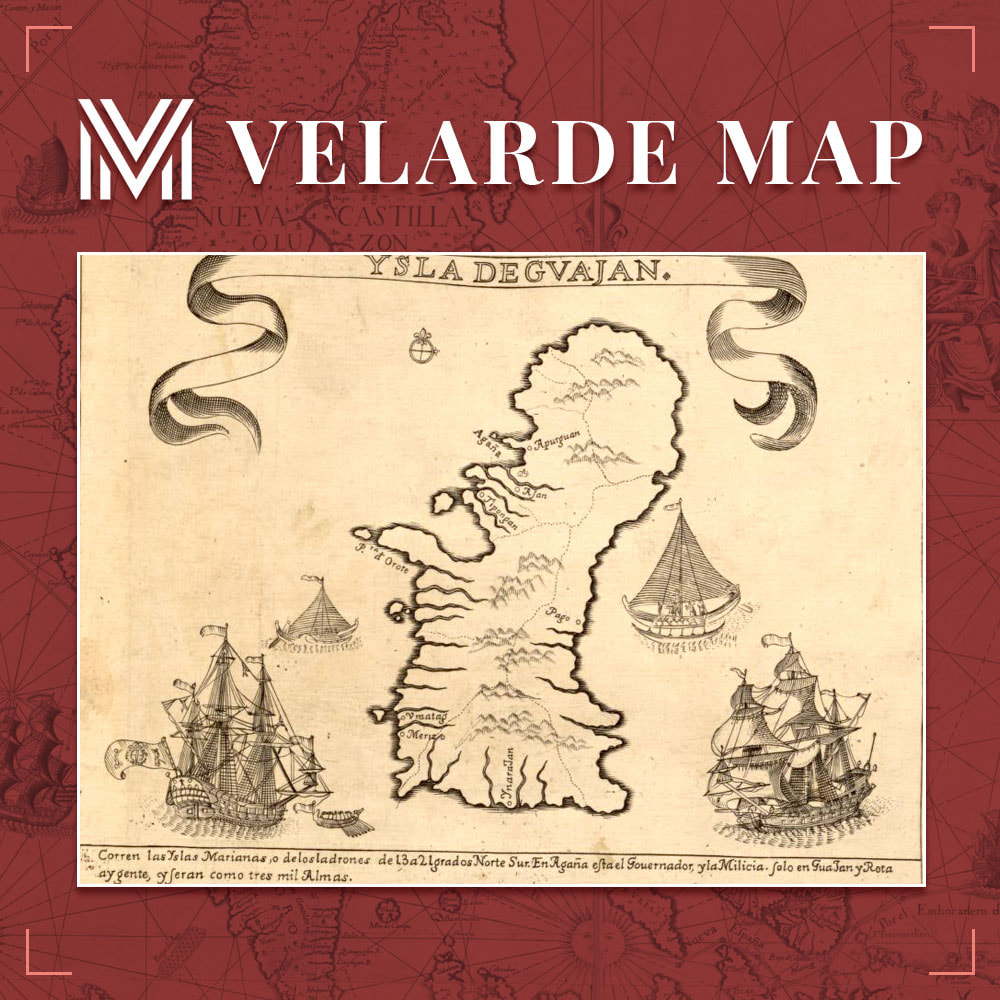
The Island of Guam (Ysla Degvajan) was a stopover for the yearly galleon trade between Mexico and the Philippines. These galleons transported not only items for merchants and other supplies to Guam, but also Filipino soldiers, missionaries, lay assistants, bureaucrats, and even political expatriates and criminals. They were manned by Filipino and Mexican seafarers with a few Spanish superiors.
The records of Filipinos in Guam during the Spanish occupation are said to be sporadic. When Spanish Jesuit Father Diego Luis de San Vitores landed in Guam around 1668, his lay assistant was said to be a Filipino Cebuano named Pedro Calungsod. Calungsod was killed alongside San Vitores when he was martyred. Both San Vitores and Calungsod have been “blessed” by the Catholic Church; this is the first phase toward canonization. Calungsod was canonized in 2012. Early documents indicate that a company of soldiers in Guam in 1690 were Filipino Kapampangans.





